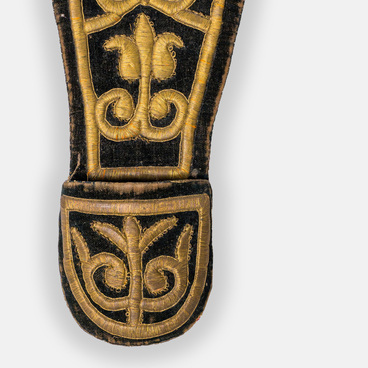An expert in the applied arts of the peoples of the Caucasus, ethnographer Yevgeniya Nikolaevna Studenetskaya, said:
Mat
The weaving of mats is known to many peoples of the Caucasus and is widespread in places where there is the raw material — reed. But the weaving technique and patterns are different among different peoples, and the most interesting and complex are, perhaps, ones of the Adyghe.
For many centuries, mats decorated the modest dwellings of Adyghe families. They were indispensable items in many rituals. The mat accompanied a person throughout their life. The harmony of the ornamental fabric, which came out of the hands and heart of national talent carried this philosophy.
Adyghe mats served many purposes. They were used for bedding on the clay floors of saklya huts, where children were raised. They were also used to decorate interiors: mats were used as backgrounds for hanging shashka swords, flintlock guns, pistols and daggers. The same principle applied to hanging musical instruments in the kunatskaya (guest house) — “shychepschyn” (violin), “kamyl” (flute), “pkhachich” (hand-rattles) — were all hanged on mats.
The use of mats is also reflected in the “Adyge habze” (Adyghe etiquette): “The mats laid out along the wall opposite the door, hearth and window were intended for elders and persons of nobility.”
Mats were widely used in wedding ceremonies. All girls were obliged to make a large mat for the wedding, a “namazlyk” (a mat for prayer) and a “legukadz” (a bedside mat). The decorative nature of the pattern and the slickness of execution eloquently testified to the girl’s hard work and her sense of beauty.
With the spread of Islam among the Adyghe, mats also became used during prayer.
Mats were used during burials. Regarding this rite, there was a popular belief that the soul of the dying person suffers if their body is put on a borrowed mat. Therefore, each house had a special mat for this event. They were kept clean and untouched, biding their time.
Mats were weaved in most Adyghe families.

